If you purchase an independently reviewed item through our site, we earn an affiliate commission. Read our affiliate disclosure.
Honeybees rely solely on flowers for their survival. Their main source of food is nectar and pollen and these are collected from blooming plants. The worker bees are responsible for collecting nectar and pollen and they will cover approximately 2 miles of diameter from their hive. In some instances, worker bees can cover even longer distances. Besides nectar and pollen, honeybees also require a clean source of water.
Unfortunately, not all flowers attract honeybees. These organized creatures are biased when it comes to their nectar and pollen sources. Honeybees will use communication and interaction as their main tools of trade when foraging. They will identify the source, carry the food, and store it in the hive. The hive mates will be notified about the food sources through organized communication. In this piece, we shall cover some of the flowers that do not attract bees. This will help the beekeeper in making wise decisions regarding beehive location or what plants to include in their garden.
What does Foraging Entail?
The honeybee colony relies on pollen and nectar as its main source of food. Pollen is rich in protein, whereas nectar is the main source of energy. Pollen and nectar are found in flowering plants and therefore the worker bees need to look for reliable sources for these. They will therefore fly away from their hive to look for these sources. This is what is referred to as foraging.
Worker bees communicate amongst themselves through a special dance, making it possible for the hunters to notify the hive mates of the nectar sources. The worker bee will forage starting from midlife and will continue with this task until its demise at 6 weeks.
The special dance helps honeybees relay a number of messages to their nest mates. These include when to swarm, the location of pollen and nectar, and also the distance to food sources. The “waggle dance” is the commonly used type of dance by worker bees. Foraging bees will perform this dance at the hive after successfully finding a rich food source. This will help direct the hive mates to the food source. It is usually performed relative to the direction of the sun in relation to the food source and will be adjusted accordingly as the sun’s direction changes.
Flowers and Plants That Don’t Attract Bees
You might want to understand the kind of flowers and plants that do not attract bees for your own reasons. Some beekeepers might want to keep the bees off some areas of their backyard, and others might want to understand why their bees could be avoiding certain areas. You might also have a garden you desire to prevent honey bees from visiting. Irrespective of your motivation, below are some of the flowers and plants that do not attract honeybees:
Geraniums
These are a no-go zone for honeybees. It is ironic that honey bees would dislike attractive flowers such as the geranium. The reason for this is the fact that these flowers do not produce pollen and its scent does not attract bees. These flowers are easy to grow and maintain. Preferable sunlight exposure is between 4 to 6 hours a day.
Pennyroyal
This is a plant that is easy to grow and does well in small containers. It requires plenty of water and grows to a height of between 6 to 12 inches. It generates a scent that is similar to mint and therefore repels honeybees and other stinging insects. The small plant can also be grown in gardens.
Marigolds
An ideal addition to any garden thanks to its conspicuous colouring. Insects such as wasps are however not attracted to the scent of this flower. Honeybees are not particularly attracted to the plant but sometimes nectar-seeking bees may visit the plant. This plant requires the least management since it is hardy and will grow easily on any ground. The red variety of marigolds wards off honeybees.
Pitcher plants
These can be an excellent addition to any garden. The plant is carnivorous and thrives well on insects. Its slippery surface acts as a trap that directs its fallen victims into a pool of water where the insect drowns and is ingested. The plant requires distilled or rainwater to grow and will never tolerate filtered tap, or bottled water. The plant relies on nutrients derived from insects and will not withstand any other minerals especially those in water. It should be fully exposed to sunlight.
Bee killer flowers
These should be avoided by all means since they are poisonous to honeybees. These include plants such as rhododendrons that produce poisonous nectar. Once ingested by honeybees, the poisonous nectar will end up in honey that will also end up on our tables. Flowers such as oleander and azaleas are also deadly to honeybees.
Fabaceae
These are legume plants that are toxic to honey bees and other stingers such as wasps. They belong to the family of peas or beans. These plants comprise trees and shrubs that tend to be annual or perennial in nature. They can be recognized by their legume fruits. In total, it comprises 700 genera and 20000 tree species that are distributed globally. Examples of these plants include alfalfa, peanuts, and woody species found in temperate climates. Most of these plants have simple leaves and some leaves are reduced to scales. The legume of the pod usually splits after drying to release its seeds.
Canna lilies
This rhizomatous plant with its tropical-like foliage makes an excellent addition to any garden. It is a perennial plant with large flowers. It is easy to grow and maintain, unlike any other flower. The floral color range from red, and orange, to yellow. Foliage color varies from maroon to bronze and they require warm conditions. They should therefore be fully exposed to sunlight. Slightly acidic or neutral and well-drained soil is required and should be moist. Plant canna lilies in groups or mixed borders to get the best results. It can be planted in containers or outdoors.
Celosias
This is a tender perennial plant whose flowers bloom for up to a month. They can tolerate the summer sun while producing bounty blooms. Its flowers may appeal to the human eye but are a complete turn-off to honeybees and wasps. Celosias have been categorized into three: plume celosia, wheat celosia, and cockscomb celosia.
The plume celosia is characterized by soft feathery flowers that range in colour from orange, magenta, red, yellow, and pink. The wheat celosia has flower hues of red-purple and pink. It looks like wheat just as its name suggests. Cockscomb celosia on the other hand has red, pink, bicolors, yellow, magenta, to pink blooms. This flower is easy to grow and requires sunlight exposure of at least 6 to 8 hours each day. The soil should be well-drained and rich in nutrients.
Peonies
These flowers with their signature colours that vary from pink, red, yellow, and white to purple would make one assume will attract honeybees. Unfortunately, that is not the case. They are usually grown in autumn and will mature and bloom by spring and summer producing breathtaking flowers. It is a perennial flower that has been proven to outlive the owner. In fact, some can live for up to 100 years. The plant does well under well-drained soils and with full exposure to sunlight.
The plant should be sheltered from strong winds. You should also use a stake to hold the plant since its bloom is heavy. You might also plant it in locations not close to trees or shrubs to evade competition for moisture, sunlight, and food. Preferred soil is moist, rich in humus, and well-drained. The soil should also have a neutral PH. Peonies are categorized into six groups, namely; bomb, Japanese, double, anemone, semi-double, and single. The toxic scent produced by some variety of these flowers repels honey bees and other nectar-seeking insects. Some varieties of the plant produce rose-like, lemony scents, or no scent.
Basil
A popular kitchen garden plant that repels insects and pests. It is also edible and can be mixed with tomato sauce. Unfortunately, honey bees and wasps cannot stand the smell of basil plants. It generates a fragrance that put off these insects. Ideal conditions for the plant are a sunlight exposure of 6 to 8 hours each day and moist and well-drained soil.
Citronella
This plant with its pervasive smell wards off honeybees and wasps. It is particularly grown widely in areas that are heavily invested with mosquitoes. The plant can do well indoors and outdoors but with sunlight exposure of at least 6 hours. It also does well under well-drained soil.
Wormwood
This plant with its pungent scent scares bees and other stinging insects such as wasps. These insects usually communicate using chemical signals and the chemical produced by wormwood portrays eminent danger to honeybees. They will therefore stay away from the location. The plant requires well-drained soil and direct sunlight. Unfortunately, this plant should be planted in its own area since it kills other plants.
Conclusion
Honeybees are not particularly regarded as pests, but you might want to keep them away from specific areas on your farm or garden for whatever reason. They are attracted to flowers with the floral colouration of violet, yellow, or blue. These tend to be the honeybee’s favourite colours. Any other hues ward off honeybees. They also dislike some plants that produce scents that put them off.
Flowers that are difficult to access its nectar and pollen tend to put them off as well. For instance, trumpet-shaped flowers such as buttercups, narcissus, and honeysuckle deter honeybees from accessing pollen and nectar. In case you find it difficult to keep off wasps or honeybees from your garden or specific areas of your garden, then it is recommended that you call a pest expert.
References
- https://www.grimmsgardens.com/plants-that-do-not-attract-bees/
- https://homyden.com/flowers-dont-attract-bees-know-plant-garden/
- https://www.mklibrary.com/plants-that-dont-attract-bees/
- https://www.gardenguides.com/118679-flowers-not-attract-bees.html
- https://www.jcehrlich.com/blog/10-plants-that-repel-bees-and-wasps/
- https://bugwiz.com/plants-repel-bees-wasps/
- https://www.gardeningknowhow.com/plant-problems/pests/insects/deterring-bees-wasps-with-plants.htm
What are your thoughts on this article? Leave a comment below and let us know.
 BeeKeepClub Resources and Guides for Beekeepers
BeeKeepClub Resources and Guides for Beekeepers


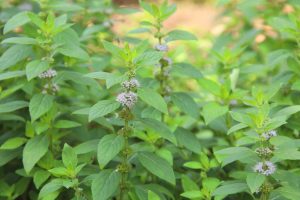
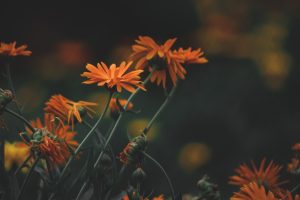
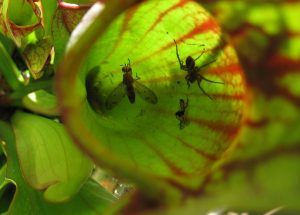
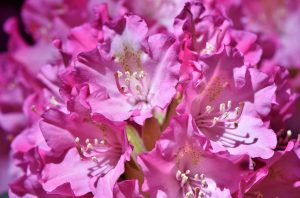
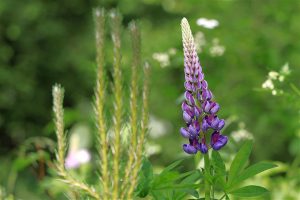
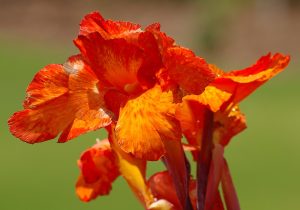

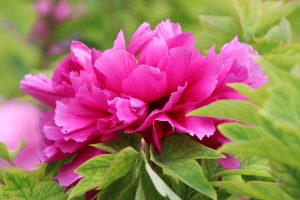
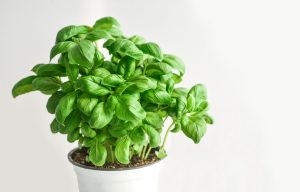
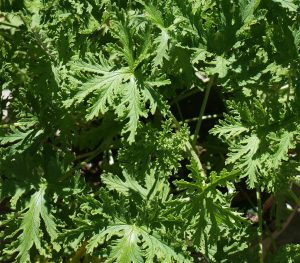

[…] Source link […]
I am surprised you inlcuded eucalyptus as an issue for honey bees. Here in Ecuador in the Andes, the eucalyptus plant / teee (there are many) is one of the main sources of nectar for honey bees and most of he mountain honey is eucalyptus based. You may not like this flavour with honey but it is the norm here.
That’s interesting, thanks for sharing.
I have mint and basil that I purposely let bloom and my bees and other stinging insects love it. I have never had a problem not having bees on either one.,
Hi, the Eucalyptus in South Africa is the main source of nectar to our bees.Could you check this info again.
Ashley
Hi, thanks for the correction.